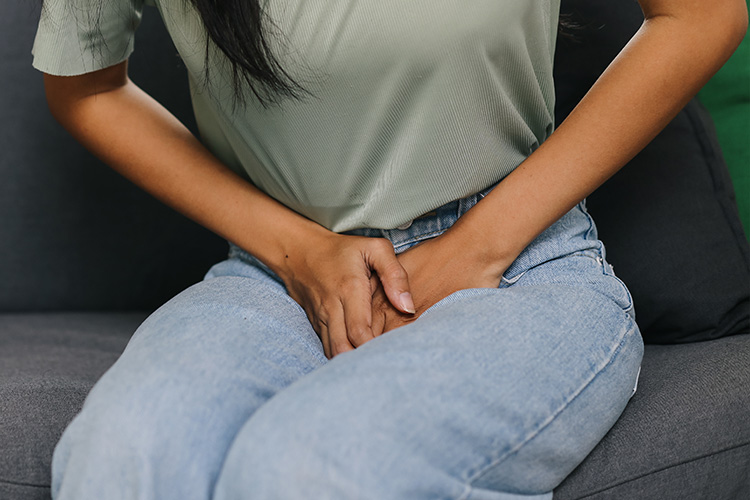Overview
Vaginal or vulvar lumps refer to unusual bumps, growths, or masses that appear in the external genital area (vulva) or within the vaginal opening. These lumps can vary widely in size, appearance, and cause, ranging from harmless conditions like cysts or ingrown hairs to more serious concerns such as sexually transmitted infections (STIs) or cancer.
In many cases, vaginal or vulvar lumps are benign and may not require treatment. However, if they are accompanied by symptoms like pain, itching, swelling, unusual discharge, or changes in color or texture, they could indicate an underlying medical issue. Consulting a healthcare provider is recommended to determine the cause and appropriate course of action.
Table of Contents
Possible Causes of Vaginal Lumps

Vaginal or vulvar lumps can result from various causes, ranging from harmless to more serious conditions. Below are some of the most common causes:
- Pimples or boils. These may develop due to clogged hair follicles or bacterial buildup, often caused by sweating, shaving, or wearing tight clothing. They are usually harmless and can resolve on their own.
- Cysts. Common cysts in the vaginal or vulvar area include Bartholin’s cysts, which occur when the Bartholin’s glands near the vaginal opening become blocked, and sebaceous cysts, which form due to clogged oil glands. These cysts are typically painless unless infected.
- Genital warts. Caused by the human papillomavirus (HPV), these small, flesh-colored or whitish bumps may cluster together and appear in or around the vaginal and vulvar area. They are usually painless but contagious.
- Ingrown hairs. Shaving or waxing can cause hair to grow inward, leading to small, raised bumps that may become inflamed or itchy.
- Herpes. Genital herpes, caused by the herpes simplex virus (HSV), can produce painful, blister-like sores or bumps in the vaginal or vulvar region. These may also be accompanied by itching or burning sensations.
- Lichen sclerosus. A chronic skin condition that causes thinning, white patches of skin, often with small bumps or scarring. It is more common in postmenopausal women and can cause itching or discomfort.
- Varicose veins. Prominent veins in the vulvar area can occur due to increased pressure during pregnancy, prolonged standing, or other circulatory issues.
- Fordyce spots. These are enlarged oil glands that appear as small, white or yellowish spots on the vulva. They are harmless and not contagious.
- Syphilis. A sexually transmitted infection that may cause painless sores or bumps in the early stages, along with systemic symptoms like fever or swollen lymph nodes.
- Cancer. Rarely, vulvar cancer may present as a lump, sore, or thickened area of skin in the vulvar region. It is more common in older women or those with HPV infections.
Identifying the underlying cause of vaginal or vulvar lumps is important for determining whether treatment is necessary. If the lumps persist or are accompanied by additional symptoms, seeking medical advice is essential for proper diagnosis and management.
When to See a Doctor
Vaginal or vulvar lumps are often harmless, but certain symptoms may indicate an underlying condition that requires medical attention. Consult a doctor if:
- The lump persists for more than two weeks. A lump that does not resolve or shows no signs of improvement should be evaluated by a healthcare professional.
- You experience additional symptoms. Pain, itching, swelling, bleeding, fever, or unusual discharge may suggest an infection or another medical issue that needs treatment.
- The lump changes in size, color, or texture. Sudden growth, discoloration, or changes in the lump’s appearance could signal a more serious condition, such as cancer.
- There are sores or ulcers. Open sores, especially if painful or persistent, may be a sign of a sexually transmitted infection like herpes or syphilis.
- You notice a cluster of bumps. Multiple bumps, particularly those resembling genital warts or caused by molluscum contagiosum, should be assessed to prevent potential transmission and ensure proper treatment.
- The lump causes significant discomfort or disrupts daily life. If the lump interferes with sitting, walking, or sexual activity, it is important to seek medical advice.
What Type of Doctor to Seek

For vaginal or vulvar lumps, you can consult a gynecologist, who specializes in women’s reproductive health. If the lump is suspected to be related to a skin condition or infection, you may also be referred to:
- A dermatologist for skin-related issues.
- An infectious disease specialist for sexually transmitted infections.
What to Expect From Your First Doctor Visit
During your consultation, the doctor will:
- Ask about your medical history, symptoms, and any recent sexual activity or exposure to potential irritants.
- Perform a physical examination to assess the lump’s size, appearance, and characteristics.
- Recommend diagnostic tests, such as a biopsy, swab test, or blood work, to identify the underlying cause.
Based on the diagnosis, the doctor may prescribe medications, suggest minor surgical procedures, or recommend additional specialist care. Prompt consultation helps ensure effective treatment and prevents potential complications.
Vaginal Lumps FAQs
Vaginal or vulvar lumps can raise many questions and concerns. Below are some frequently asked questions to help you better understand this condition:
- What causes vaginal or vulvar lumps?
These lumps can be caused by various factors, including pimples, cysts, ingrown hairs, genital warts, sexually transmitted infections (STIs), or even rare conditions like vulvar cancer. - Are vaginal lumps always a sign of a serious condition?
No, many lumps are harmless, such as cysts, pimples, or Fordyce spots. However, persistent lumps or those with additional symptoms like pain or discharge should be evaluated by a doctor. - Can vaginal lumps be caused by shaving or waxing?
Yes, shaving or waxing can cause ingrown hairs, which may appear as small, raised bumps that sometimes become itchy or inflamed. - Are genital warts a cause of vaginal lumps?
Yes, genital warts caused by the human papillomavirus (HPV) can appear as small, clustered bumps on the vulva, vagina, or surrounding areas. - Can vaginal lumps go away on their own?
Some lumps, like pimples or ingrown hairs, may resolve without treatment. However, others, particularly those caused by infections or chronic conditions, may require medical intervention. - Are vaginal lumps contagious?
Lumps caused by STIs, such as herpes or genital warts, can be contagious. It is important to seek medical advice and take precautions during sexual activity. - When should I see a doctor about a vaginal lump?
Consult a doctor if the lump persists for more than two weeks, is painful, changes in appearance, or is accompanied by symptoms like itching, bleeding, or unusual discharge. - Can cancer cause vaginal or vulvar lumps?
While rare, vulvar cancer can present as lumps, sores, or thickened skin. It is more common in older women or those with HPV infections. - How are vaginal lumps treated?
Treatment depends on the cause. Options may include antibiotics, antiviral medications, draining cysts, or surgical removal. Chronic conditions may require ongoing management. - Can I prevent vaginal lumps?
Practicing good hygiene, using protection during sexual activity, avoiding irritants, and wearing loose-fitting underwear can help reduce the risk of developing vaginal or vulvar lumps.
If you have concerns about vaginal or vulvar lumps, consult a healthcare professional for proper diagnosis and treatment. Early intervention can prevent complications and provide peace of mind.


